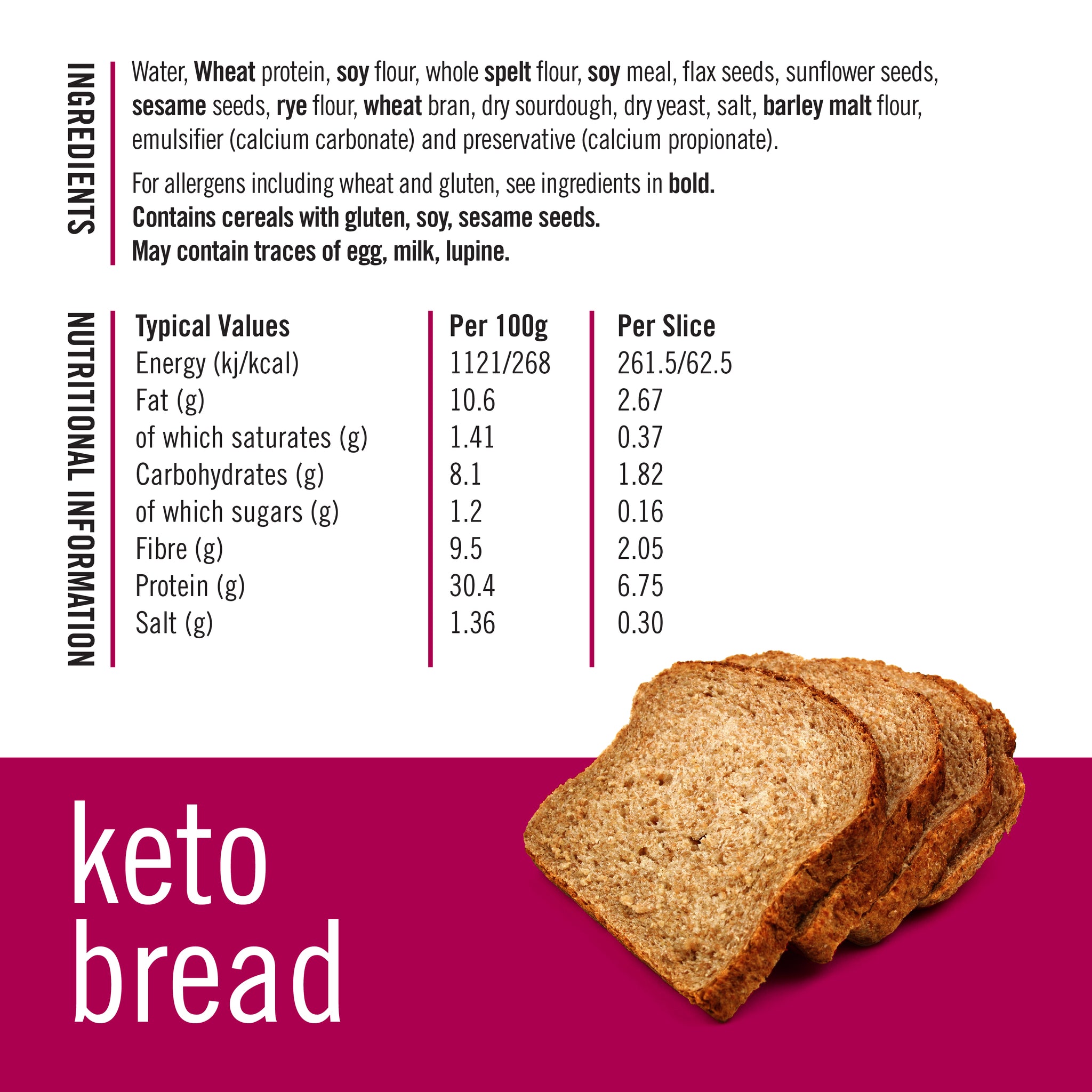Bread and the keto diet have long been viewed as incompatible. Traditional bread is made mainly of refined wheat, and is loaded with carbohydrates. Just a small amount of bread could disrupt ketosis by boosting blood sugar and forcing your body to use glucose instead of fat. Many ketosis followers were forced to eschew bread completely and often lacked the convenience and comfort it provides to daily meals. Today, however, innovation in baking has completely changed the story.

Image credit: fitbakes.co.uk
What exactly is Ketogenic Diet Bread Exactly?
The ketogenic diet isn’t just low-carb It’s also designed to be strategic. Bakers replace carb-rich flours with almond, coconut, or flaxseed meal, blending them with eggs or plant-based proteins to create an item that is rich in nutrition but nearly carb-free. The large quantity of protein, generally around 7 grams per piece is what makes this loaf not just keto-friendly but also aids in eating disorders and muscle repair.
Equally important is the seed quantity. With as much as 17% seeds like flax, sunflower, or chia, keto bread delivers a boost of omega-3 fatty acids as well as fiber. These vitamins promote the health of your heart, boost digestion and aid in ensuring that keto-lovers to eat enough without cravings. Keto bread can be a healthier alternative to the traditional low-calorie breads that sacrifice taste.
What’s the function of low carb bread in blood sugar management?
The lowest carb bread is more than a diet-friendly option it’s a powerful tool for metabolic health. With just 2 grams of net carbs per slice, it aids in helping stabilize blood sugar levels, and reduces the risk of crashes and spikes that lead to hunger, fatigue, and long-term insulin resistance. For those with diabetes, this bread is not only convenient, but transformative. It provides the sensory satisfaction of eating bread while maintaining safe glucose levels and a unique combination of control and comfort.
Low-carb bread is great for those who are calorie-conscious. With 63 calories in every slice, consumers can relish their breakfast toast or hearty sandwich without feeling guilty. For those who are aiming at weight management, it becomes an ally satisfying hunger while keeping both carb and calorie intake under control.
Bread on Keto: An Practical Everyday Solution
The phrase bread on keto is no longer a signal of compromise. In reality, it’s a great opportunity. Avocado toast on seeded Keto bread is a great breakfast option that provides healthy proteins, fats and fiber. It is possible to still enjoy a your turkey and cheese sandwiches for lunch on the go without going over your daily carbs. Even meals like garlic bread are possible when you make use of low-carb breads.
The variety of ketogenic loaf is among its strengths. It’s not just a once-in-a-lifetime indulgence. It’s a staple in order to make keto living sustainable. This lets you include it in all of your meals, removing the restriction that many feel when they begin a diet.
Keto Bread: The Future of a Healthy Diet
These breads will be the future of healthy diets for all people, not just those who follow keto. Ingredients like plant-based proteins, omega-rich seeds, as well as high-fiber can benefit everyone, not just those who need to reduce carbs. The balance of nutritional value and taste has made keto bread popular with athletes, diabetics, weight-conscious people, as well as those simply looking for alternatives to processed white bread.
Keto bread isn’t an eating trend. It’s actually a breakthrough in baking. It provides long-term health benefits and solves the problem of how do you enjoy bread without carbs.
The end of the article is:
The fight between the keto diet and bread is over. With the advancement of technology ketogenic bread lets the user to enjoy a slice of cake without affecting your ketosis. With the lowest carb bread now readily available it is possible to enjoy sandwiches, toast, and other snacks without worrying about not achieving their low-carb objectives. Beyond being a mere alternative bread on keto, it is now a key element of modern nutrition a link between comfort eating and healthy lifestyle.
